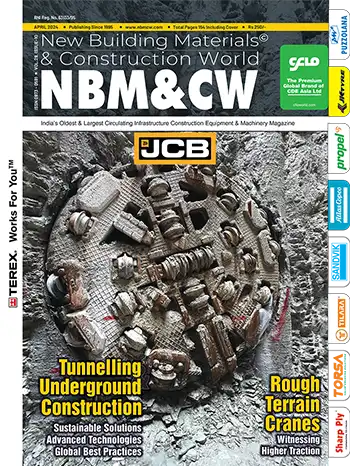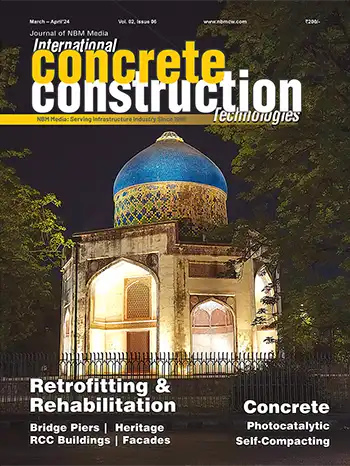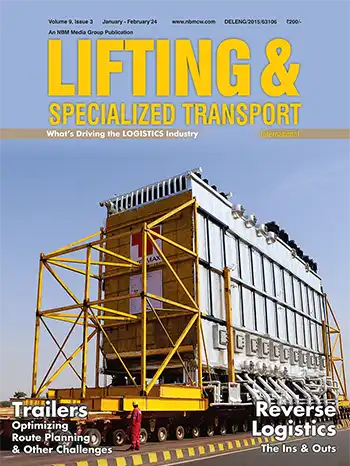Rajiv Chaturvedi, Vice President- Sales & Marketing, After Service & Parts, Hyundai

The government has announced ambitious plans to spend $1.4 trillion on infrastructure over the next five years, which looks promising.
The uncertainty caused due to Covid-19 and the subsequent lockdown imposed by the Government brought the entire country to a standstill for a couple of months in H1 of 2020. However, June onwards unlocking activities began, and industries resumed their business cycle - operating as per Government specified norms on social distancing.
While it is too early to say whether the crisis and the economic downturn will make a U turn, or change the value-creation profile of corporate India (or by how much), Indian corporates and executives will definitely continue to face the challenge of reallocating capital away from businesses and sectors that create less value, and toward those that create more. The government has announced ambitious plans to spend $1.4 trillion on infrastructure over the next five years, which looks promising.
Supporting the time and cost overruns of the majority of Infra contractors will greatly boost the morale of the industry players.
I feel that to sustain the Infrastructure growth, the cardinal focus should be to bring positivity in the mindset of the business community, through time bound actions on important focus areas. As we know, most of the projects are severely affected by time and cost over runs due to multiple reasons/constraints caused due to the pandemic. Supporting the time and cost overrun of the majority of Infra contractors will greatly boost the morale of the Industry players in contributing to Infra growth, through their aggressive participation with skills, equipment, technology, and financial resources.
The state governments’ decision to put on hold many road/Irrigation projects for want of funds is a critical situation, which dampens the spirit of business revival, amongst contractors and financers, and the entire value chain of suppliers/service providers etc. Hence, it’s important to make liquidity sufficiently available by the departments for all the infra projects planned and ongoing, so that the growth is not hampered, and the pace of Infrastructure development projects is not slowed down.
India's construction industry is poised for strong growth over the coming years as the government expands investment in public infrastructure projects and as ongoing reforms improve the market's attractiveness to private and foreign firms.
There is an urgent need to build infrastructure in areas such as water, power transport, communication, logistics, supply chain systems, freight corridors, expressways etc, which will lead to rapidly setting up of industries with abundance of cost-effective resource availability, at world-class quality and the shortest lead times. These will attract direct foreign investments, create employment opportunities, allow factories to run at full capacities, and ultimately boost country’s GDP growth in the times to come. Strategic VC funds must be made available as SPV from within or outside the country to support the major Infra projects across the country; this is critical for the overall revival and sentiments in the industry.
The year 2021 is expected to be the Year of Revival with demand coming up for specialized machines, wherein time-bound work with mechanization and remote management will be the key focus.
Currently, the CE industry is at 50-60% level compared to similar period of 2019, however, business activities have started picking up, but with caution, showing hope of revival. The third quarter of FY 2020-21 is expected to be better post monsoon when rural market/ economy will start driving demand, laced with the festive season raising positive sentiments.
The six-month moratorium announced by the Government to support the industry was an excellent move. At the end of August 2020 when the moratorium period ends, finance partners will focus on overdue collection, bringing additional liquidity in the market, in all probability. The financers’ outlook for Q4 will also depend on the quality of assets recognized post the moratorium period and will be a wait and watch situation for the credit lending in Q4 of 2020 and next year.
The year 2021 is expected to be the Year of Revival, with demand coming up for specialized machines like Digitally Smart Excavators, Mini Excavators, BHLs, Skid Steer Loaders, Material Handling Equipment, and a variety of equipment for smart cities, wherein the time bound work with mechanization and remote management will be the key focus. Digital platforms, and marketing of products and services will promise an opportunity for growth. Opportunities in used equipment and rental business coupled with innovative financing solutions by OEMs will be key drivers of growth in equipment sales and rentals. A word of caution here: there could be cautious lending by some of the financial institutions, NBFCs and banks.
Corporates must start focusing on Rural Markets as these will be a major growth driver with huge investments flowing in from the Government and will speed up the economic revival in the year ahead.
Going forward, the Government’s emphasis on Atmanirbhar Bharat for Make in India in the manufacturing sector has set clear directives for a long-term commitment to all investors. This is a promising note with the economy in 2021 appearing to rebound and normalcy expected to be restored. Certain landmark decisions by the Government in the real estate sector like RERA, Insolvency and Bankruptcy Code, Transparency in projects allocation, advance Land/Forest clearances for Infra Projects, bring transparency in businesses and for the economy as well.
The decision to reschedule bauma CONEXPO INDIA is a welcome move.
The current social distancing norms that are in force will possibly continue for a longer duration and conducting a mega exhibition like bauma CONEXPO INDIA with a mass gathering would put all exhibitors as well as visitors at high risk. The decision to postpone the exhibition will help interstate vehicle and people movement to be further relaxed. Mobility of goods and display materials will be eased, and also the norms relaxed for customs clearance at ports. Participation by exhibitors and visitors will be encouraging, as the fear of pandemic would have eased to some extent and normalcy would have been restored.


















